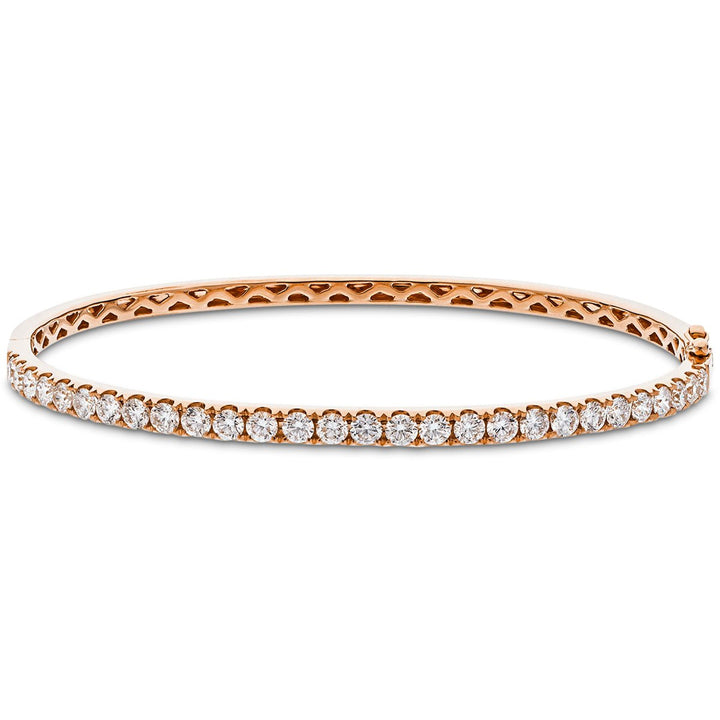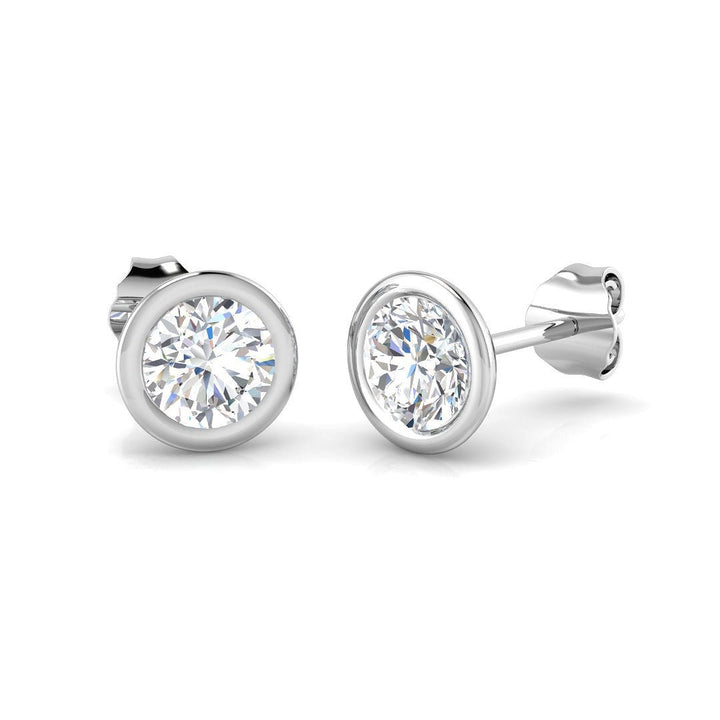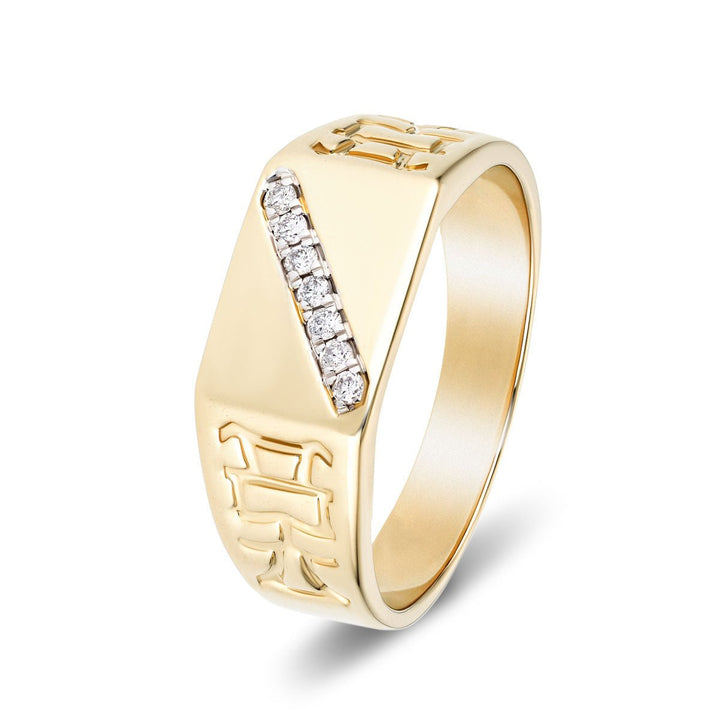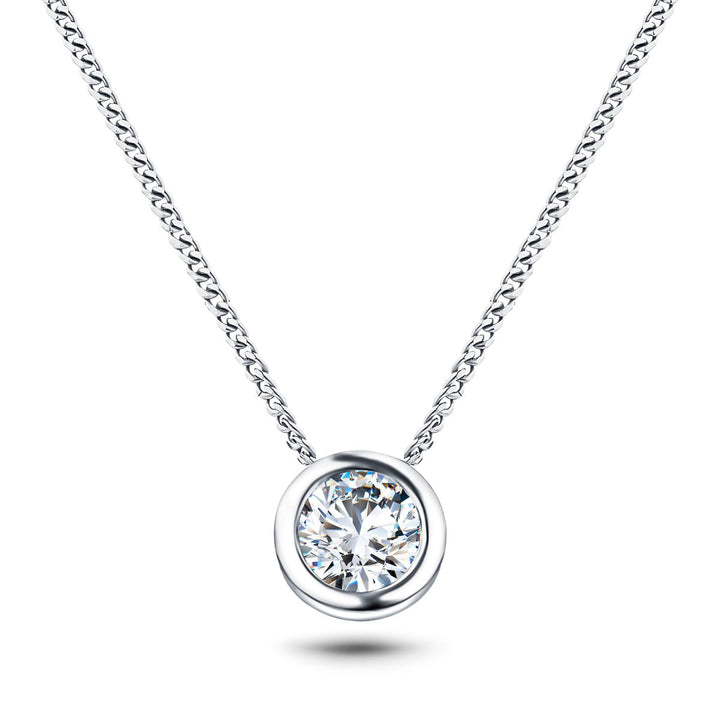In This Article
So, you want to get the hang of using a 10X jeweller's loupe like a pro gemologist or jeweller? No problem! Let's dive in.
First things first, hold that loupe close to your dominant eye. Trust me, you'll want to make sure your gemstone is well-lit (natural light's your best friend here) and positioned right up near the lens.
Now, here's the trick: move the gemstone, not the loupe. It's kind of like dancing—keep your loupe steady and let the gem do the moving to stay in focus. Start looking for inclusions and flaws that your naked eye misses. Amazing, right?
Lighting is super important—think of it as your stage spotlight. Proper lighting techniques can help you avoid annoying glare and highlight those crucial details. Pro tip: go for a loupe with triplet lenses and colour correction (you'll thank me later for the clarity).
Oh, and one more thing—don't touch the gems! Use tweezers to handle those precious gems. With a bit of practice and patience, you'll start revealing the hidden secrets of every gemstone (like uncovering buried treasure).
Feeling a bit overwhelmed? Don't sweat it! We've all been there. Just keep at it, and you'll get better every time. Ready to master more tips? Keep exploring! You've got this.
Lab Diamond Claw Set Bangle 1.00ct D/VVS in 9k Rose Gold

£1,350.00
£3,005.00
Introducing the epitome of elegance, modernity, and versatility: the Lab Diamond Claw Set Bangle. This exquisite piece boasts 1.00ct of real diamonds, meticulously claw set to showcase each gemstone's brilliance. Crafted in luxurious 9k rose gold and featuring a slender… read more
Main Highlights
- Hold the jeweller's loupe close to your dominant eye and keep the gemstone near the lens for a clear view.
- Use appropriate lighting techniques to enhance gemstone details and avoid glare.
- Move the gemstone, not the magnifying glass, to maintain focus and reduce eye strain.
- Use triplet lenses for reduced distortion and accurate gemstone assessment.
- Practice regularly to perfect holding techniques, adjust lighting, and maintain focus.
What is a 10X Magnifier?
Ever wondered what a 10X magnifier or jewellers' loupe is? Well, let me tell you, it's a game-changer for anyone in the gemology or jewellery world. This handy little tool—think of it as your magnifying glass on steroids—lets you dive into the intricate details of gemstones with ten times the normal magnification. Yep, you heard that right, ten times! It's like having superhero vision for spotting those tiny nuances.
Now, let me break it down for you. The best 10X magnifiers usually come with triplet lenses (that's three lenses stacked together), which helps reduce distortion and gives you a super clear, sharp image. Sounds pretty cool, right?
Using a 10X magnifier has so many perks. For starters, it helps you spot inclusions and flaws that you just can't see with the naked eye. (Think of it as your secret weapon for quality control.) By magnifying the stone, you can catch those tiny imperfections that could affect its value. Plus, you can get up close and personal with the cut and polish, making sure everything meets industry standards. This kind of attention to detail is crucial for accurate evaluations and appraisals.
But wait, there's more! The 10X magnifier isn't just for diamonds—it's your go-to for coloured stones too. With a bit of practice, using a magnifier becomes second nature. You'll be whipping it out like a pro, offering precise and reliable assessments (because who doesn't want to be the go-to expert?).
Trust me, mastering the 10X magnifier can elevate your game. It builds your expertise and trustworthiness in the eyes of clients. And let's be honest, who doesn't want to feel like a rock star in their field? So, grab that magnifier, dive into the details, and watch your skills—and confidence—soar.
8ct Lab Diamond Tennis Bracelet D/VVS Quality Set in 9k White Gold

£2,675.00
£5,795.00
A celebration of timeless elegance, this tennis bracelet features 8ct of D/VVS quality lab-grown diamonds, claw set in 9k white gold links. The impeccable craftsmanship of UK artisans is evident in the perfect alignment of the round diamonds that sparkle… read more
Choosing the Right Loupe
Choosing the right loupe can truly enhance your gemstone evaluations, both in precision and ease. When you're in the market for a loupe, the main features to focus on are magnification levels and lens quality. The FTC recommends using a 10X loupe for diamond grading because it strikes the ideal balance between detailed inspections and distortion.
So how do you decide? Well, here's a little guide to help:
| Feature | Why It Matters | What I Recommend |
| Magnification | Vital for detailed inspection | 10X magnification |
| Lens Type | Determines clarity and distortion | Triplet lens |
| Coating | Affects colour accuracy | Colour correction coatings |
| Build Quality | Impacts durability and ease of use | Metal casing |
| Price | Balances cost with necessary features | Mid-range for best quality/value balance |
Quality is key, no doubt about it. A triplet loupe, with its three lenses, cuts down on distortion and gives you crystal-clear views—super important for accurate gemstone evaluation. And let's not forget those colour correction coatings; they make sure you see the gem's true colours, which is crucial for assessing quality. While high-end loupes come with all the bells and whistles, a well-chosen mid-range loupe (think of it as the Goldilocks zone) can give you everything you need for your gemological adventures.
Imagine being part of a community of skilled gemologists and jewellers (it's like joining a club where everyone speaks the same language). By focusing on these features, you'll find a loupe that not only improves your work but also helps you feel like you truly belong.
Proper Lighting Techniques
You know, mastering proper lighting techniques can really elevate your gemstone inspection skills, especially when using a 10X loupe. It's not just a case of switching on a lamp; there's a whole world of subtlety to consider. So, let's delve into how lighting angles, brightness levels, and reflection control can truly make a difference.
Firstly, let's discuss lighting angles. Imagine your light source as a spotlight on a stage. You wouldn't always shine it directly, would you? Experiment with positioning the light at different angles to capture various facets of the gemstone. Side lighting can showcase the quality of cutting and polishing, while backlighting can highlight any inclusions. It's like giving the gem a thorough 360-degree examination.
Moving on to brightness levels. Have you ever tried to read under an excessively bright light? It's not enjoyable, and the same applies to inspecting gemstones. Adjust the brightness to a moderate level. Too much light can cause annoying glare (similar to driving into the sun), while too little can result in missing important details. Find that perfect balance that illuminates the gem without overpowering it.
Now, let's address reflection control. This is where things can get a bit more challenging. Reflections can be like that friend who always ruins your perfect photo. Use diffused lighting or a light box to manage those reflections. It's akin to applying a filter to your camera—it helps you see the true characteristics of the gem without distracting glare.
So, why is all this significant? After all, aren't we all striving for perfection? (Or at least, as close as possible?) By mastering these lighting techniques, you're not simply observing a gemstone; you're unlocking its mysteries. You're the detective in this sparkling puzzle, piecing together clues with each subtle change in light.
And remember, don't be disheartened if it takes some practice. Rome wasn't built in a day, and neither are expert gemstone inspectors. Keep persevering, and you'll soon notice the nuances and intricacies that make each gemstone special.
Ready to illuminate your gemstones? Let's begin!
Lab Diamond Solitaire Stud Bezel Set Earrings 4.00ct G/VS 18k White Gold

£1,675.00
£6,746.00
The Lab Diamond Solitaire Stud Bezel Set Earrings feature a beautiful 4.00 carats total weight of G/VS-graded lab-grown diamonds. The earrings are 18k white gold with a sleek and modern bezel setting. These earrings are perfect for any occasion, adding… read more
Inspecting Gemstones
Hey there! When I'm inspecting gemstones, I always start by holding that trusty 10X loupe right in front of my dominant eye. It's like having a superpower! I position the gem close enough to get it into clear focus, and let me tell you, being in a well-lit area makes a world of difference. You can see all those tiny details that make each gemstone unique.
Ever wondered what those little imperfections (we call them inclusions) can tell you? They're like the gemstone's fingerprints, revealing clues about the stone's origin and quality. Sometimes, inclusions can also spill the beans on any treatments the gemstone might have undergone, like heat or fracture filling. Pretty cool, right?
Now, let's talk diamond clarity. I gently move the gemstone to catch different angles and watch how the light dances within the stone. This little trick helps me spot any internal flaws or blemishes. Remember, diamond clarity is crucial for determining the stone's value and its fundamental quality.
Here's a tip: keep both eyes open. It reduces eye strain and improves your depth perception, giving you a better sense of the gemstone's three-dimensional aspects (it's like seeing the gemstone in 3D!).
And trust me, practice moving the gemstone, not the loupe. It helps maintain better focus and gives you a detailed look at those external features.
Common Mistakes to Avoid
Let's have a natter about how to use that trusty 10X jeweller's loupe without tripping over common mistakes. Trust me, getting the hang of this technique will make your gemstone assessments sparkle (pun intended). So, let's dive straight in.
First off, when you get started, you'll find yourself fumbling with the loupe and the gemstone. I know it's tricky, but proper management is crucial. Hold the loupe steady and bring the gemstone close to the lens without actually touching it. Why? Because smudges and oil residue from your hands can mess up the details you need to see. A simple fix? Use tweezers or gloves to prevent smudges, and keep that view crystal clear.
Next, let's talk about focusing. If you rush the process of examining a diamond, it will probably end up being a blurry mess? Yeah, me too. So, here are some focusing tips to keep in mind:
1. Eye positioning is key: Keep the loupe close to your eye and the gemstone near the lens. (Think of it as a cosy little dance between your eye and the gem.)
2. Lighting matters: Make sure there's a bright light source behind the stone to illuminate it properly. It's like putting your gem in the spotlight!
3. Move the gemstone, not the loupe: This trick helps you keep the gem in focus without giving yourself eye strain.
Lastly, take it slow. Seriously. It's tempting to zip the gemstone around, but slow, deliberate movements will help you maintain focus and clarity. This way, you can easily spot those tiny inclusions or imperfections. Imagine you're a detective, carefully examining every inch of the gem.
Mens Signet Ring With 0.10ct Lab Diamonds in D/VVS 9k Yellow Gold

£575.00
£895.00
Introducing the epitome of masculine elegance: the Men's Signet Ring, a striking statement of style and sophistication. This distinguished piece features 0.10ct of real lab diamonds, set in a classic claw setting that highlights the brilliance of each round-shaped gemstone.… read more
My Final Thoughts About Using a Jeweller's Loupe
Next, let's have a chat about how mastering a 10X jeweller's loupe can seriously enhance your skills in gemology and jewellery appraisal. Believe me, choosing the right loupe, ensuring good lighting, and avoiding common mistakes can make a world of difference.
Firstly, let's discuss the loupe itself. Ever feel like you're picking out a magic wand? (Well, you kind of are!) Select a high-quality loupe with a triplet lens; it's akin to finding the perfect pair of spectacles. When it comes to lighting, natural light is your best ally, but a good LED light can work wonders too.
Here's a top tip: always keep both eyes open. It sounds strange, doesn't it? However, it helps with focus and reduces eye strain. Instead of moving the loupe around like a detective's magnifying glass, move the gemstone. It's like a dance—let the gem take the lead!
It's important to practice, practice, practice. With time, you'll begin to spot the hidden beauty in every stone (it's like uncovering a secret treasure). And remember, everyone makes mistakes initially; it's all part of the learning process.
Feeling a bit overwhelmed? Don't fret, we've all been there. Take it step by step, and soon enough, you'll be exposing the inner brilliance of gemstones like a professional. And hey, every little discovery you make along the way will make your expertise shine even brighter.
So, happy gem hunting, and may your jeweller's loupe be your reliable companion on this sparkling journey!
Lab Diamond Solitaire Bezel Necklace Pendant 0.50ct D/VVS in 18k White Gold

£565.00
£1,076.00
Radiate elegance with this gorgeous Lab Diamond Solitaire Bezel Necklace Pendant, handcrafted from 18k white gold in the UK. This necklace is the epitome of sophistication with a round 0.50ct D/VVS-graded lab diamond in a bezel setting. The diamond is… read more
Ready to Explore Lab-Grown Diamond Jewellery?
Now that you've learned how to use a jeweller's loupe, why not put your new skills to the test? Discover our exquisite collection of lab-grown diamond jewellery at After Diamonds. Our lab-created diamonds offer the same quality and brilliance as mined diamonds, with added value and ethical assurance.
Explore our range of handcrafted, UK-designed pieces
Experience the beauty of real, lab-grown diamonds
Enjoy quality and value without compromise
Visit our online store today and find the perfect piece to add to your collection. With After Diamonds, you can be confident in the quality and craftsmanship of every item.




